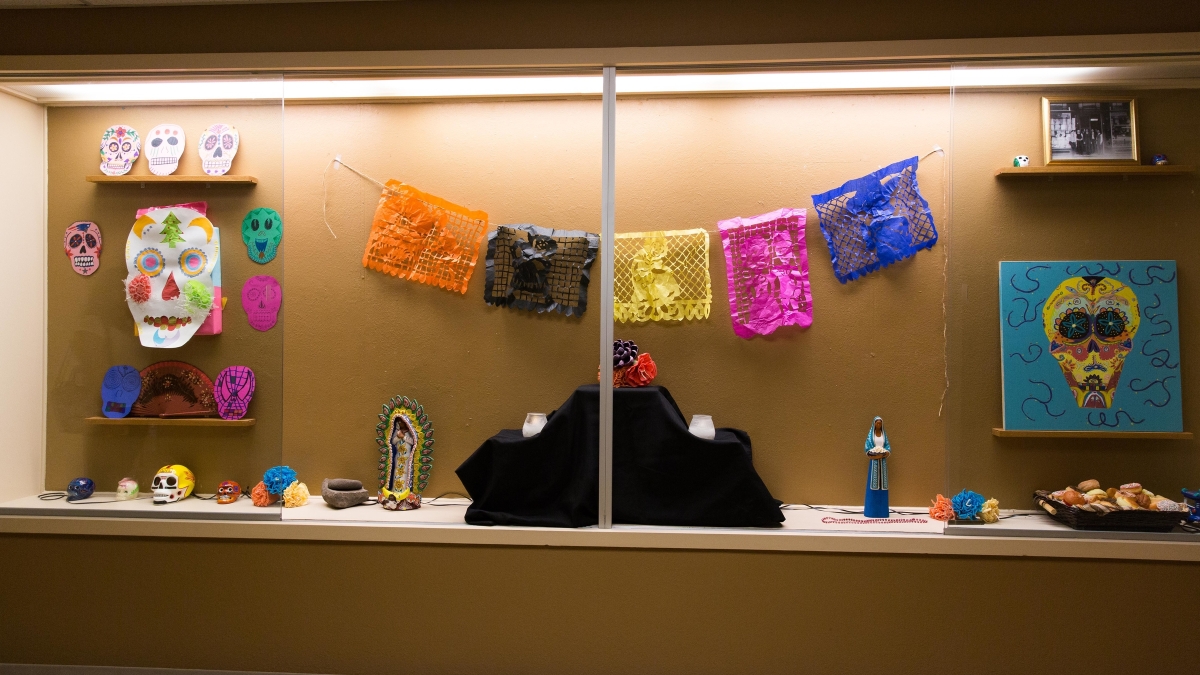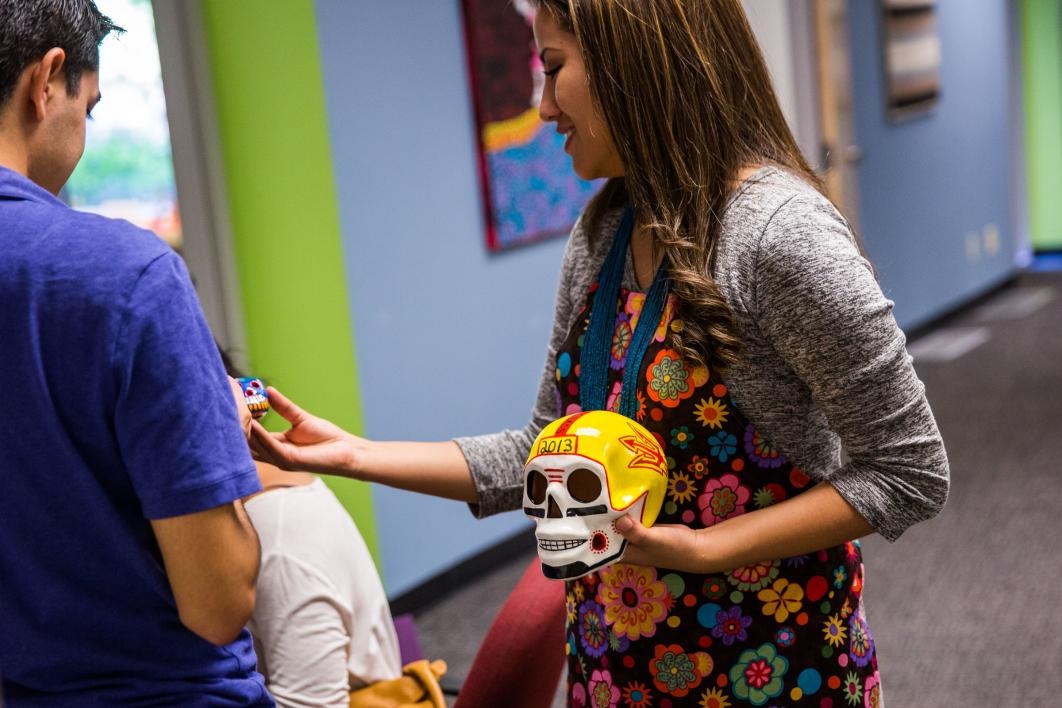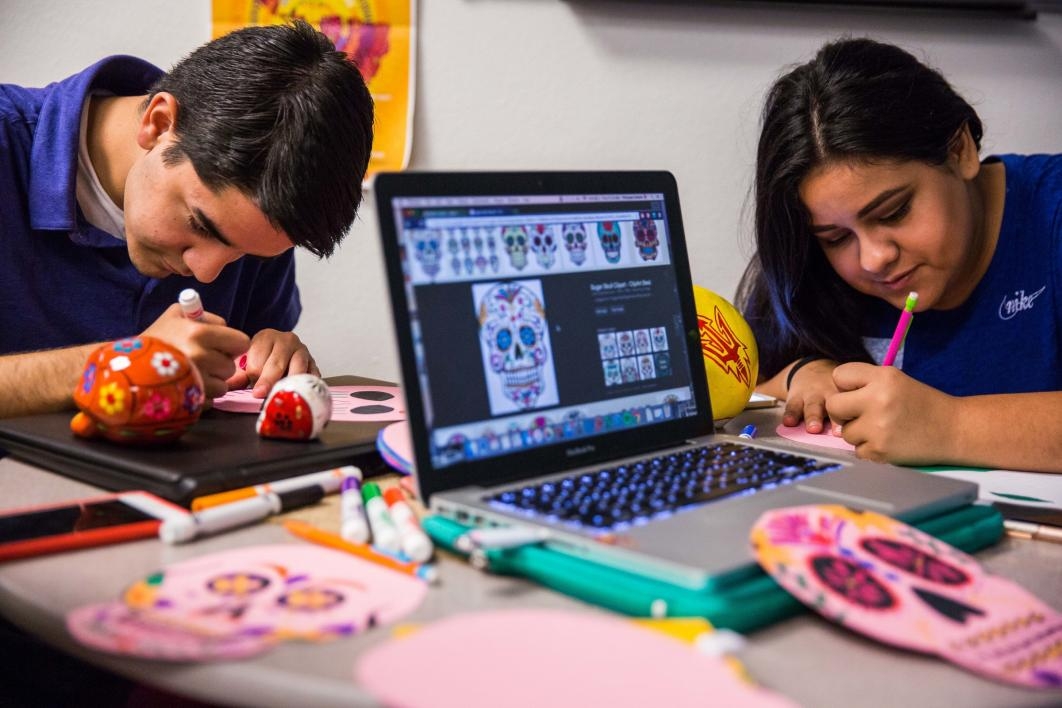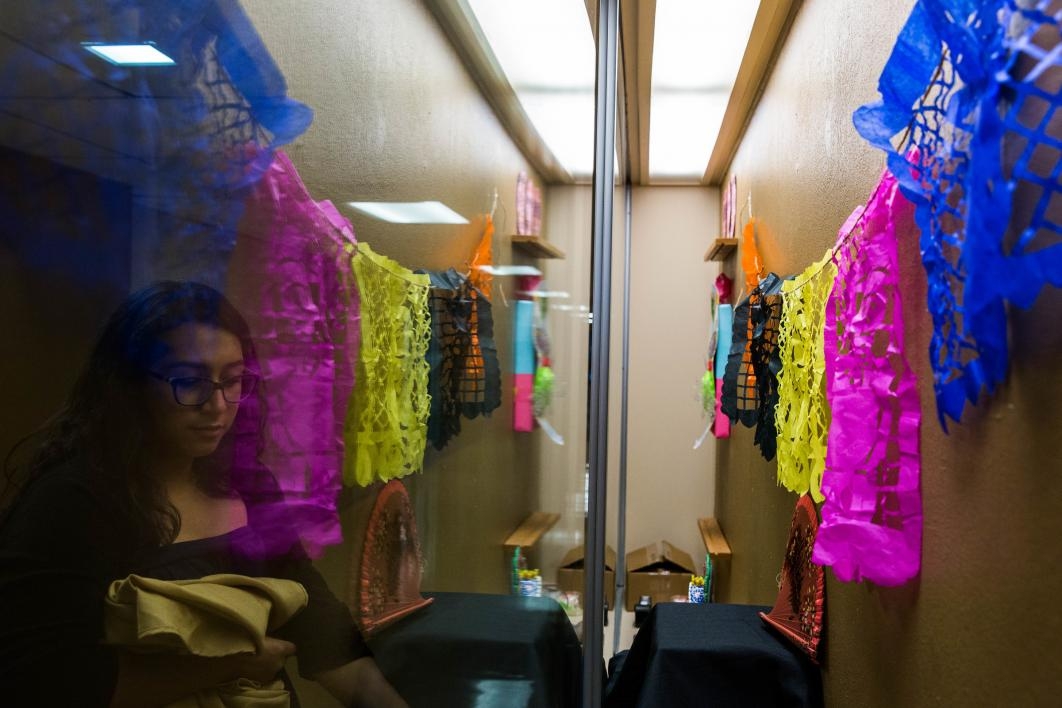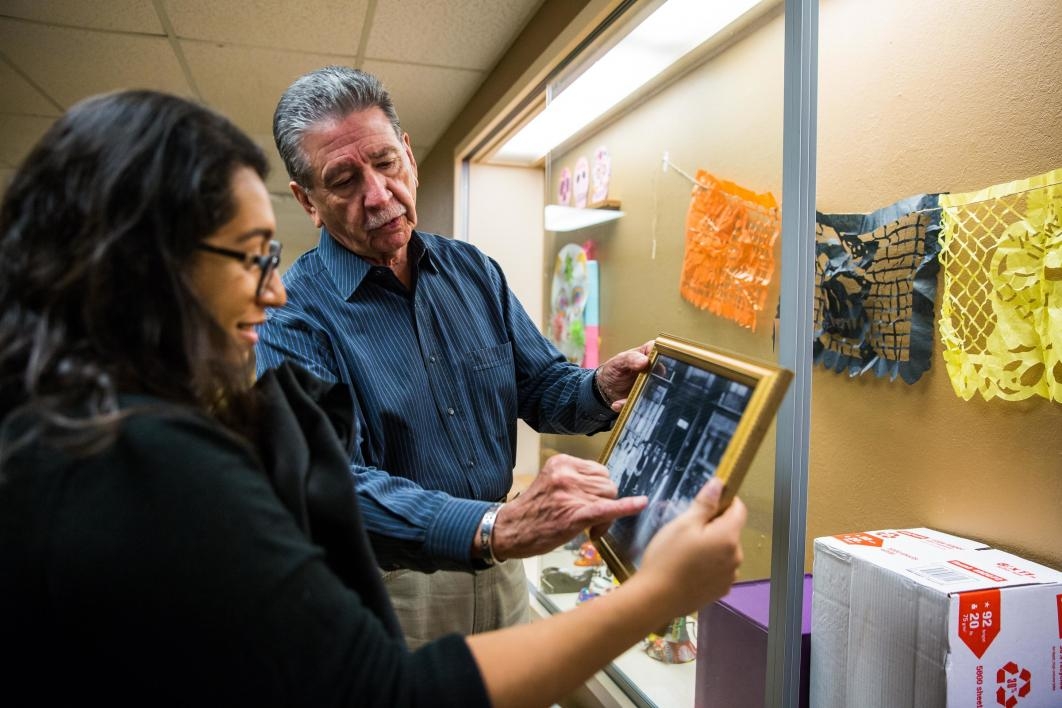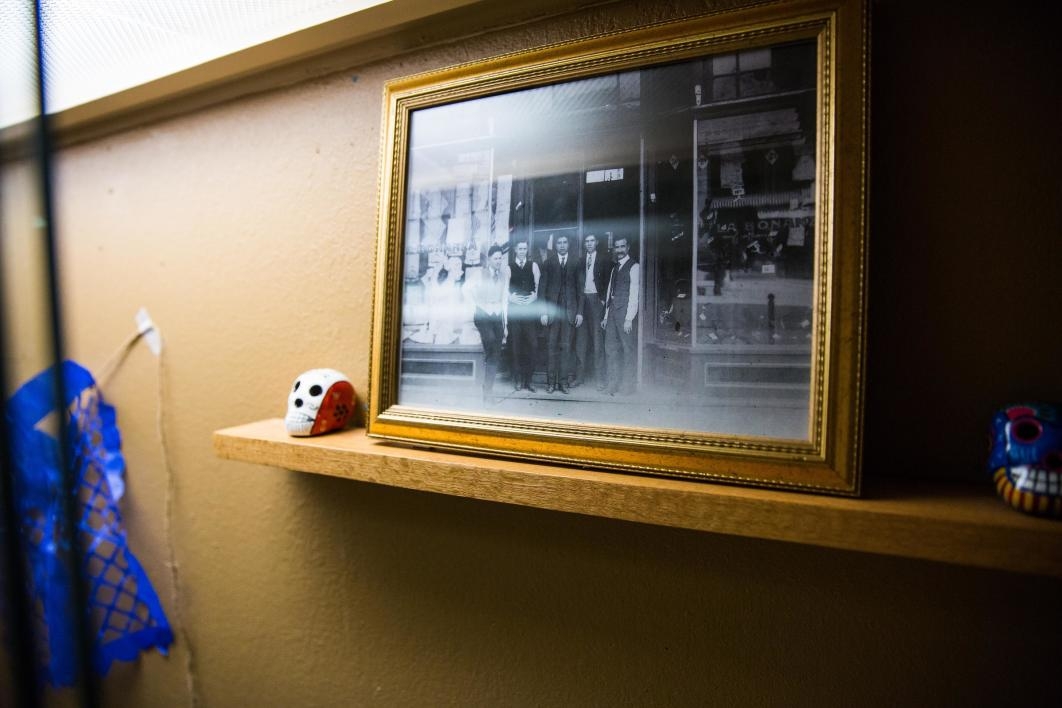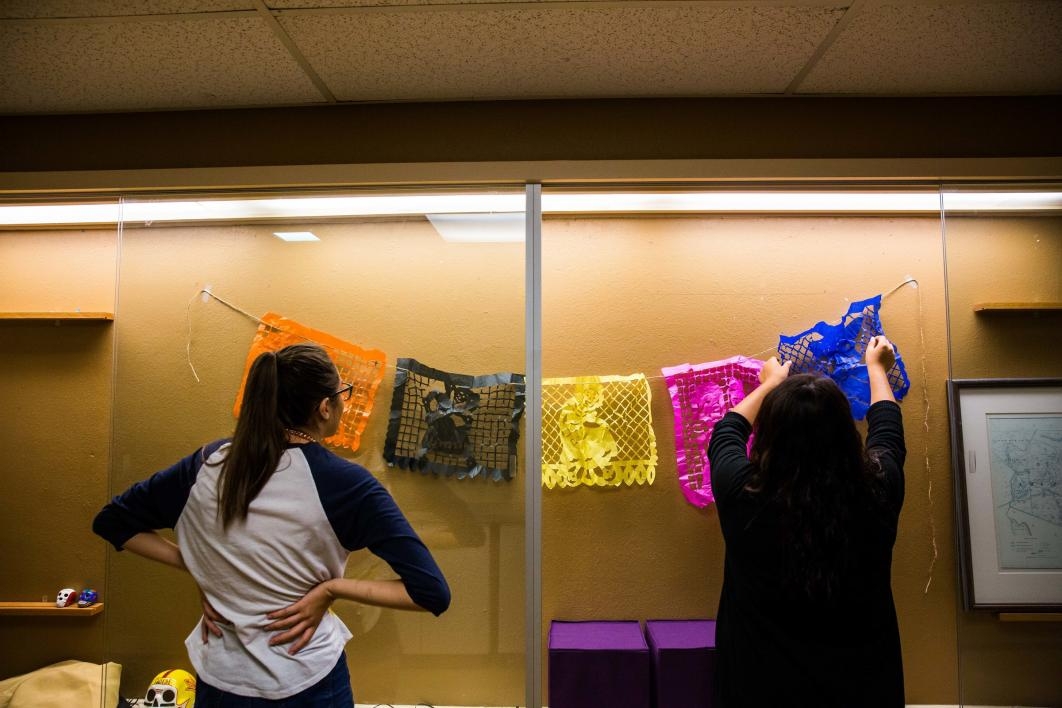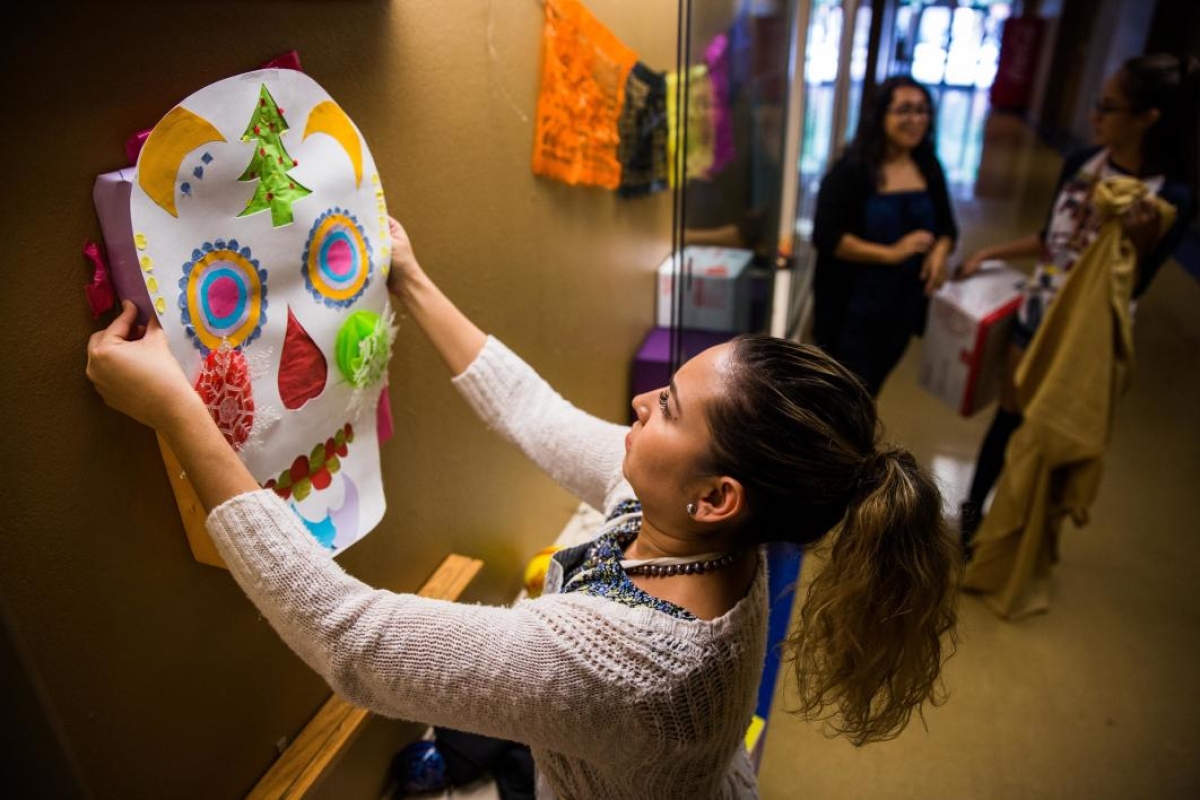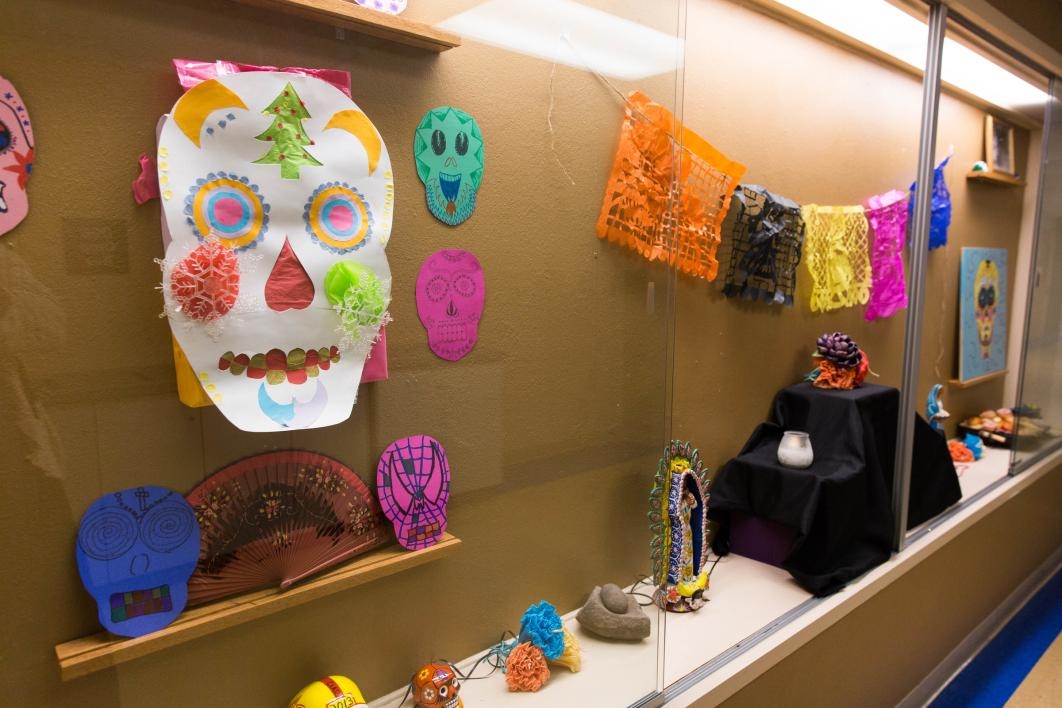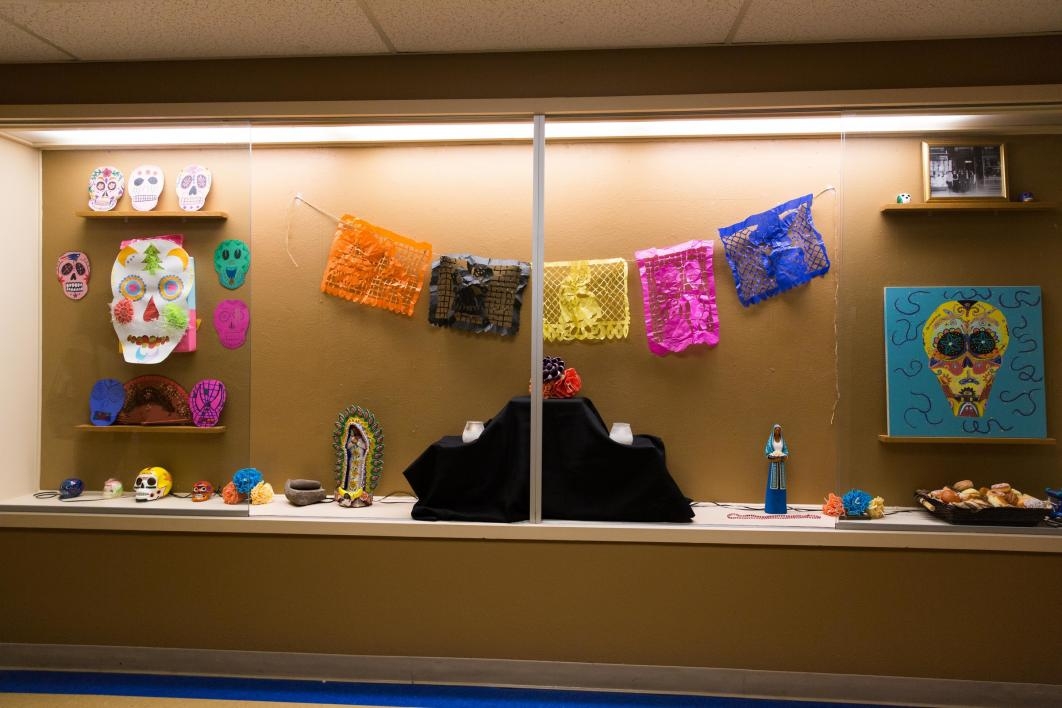Skulls of different shapes, sizes and materials litter a table in the Interdisciplinary B building on ASU’s Tempe campus where students sit contentedly decorating them. But this isn’t some sort of superficial, Ouija board session put-on — for business entrepreneurship sophomore Briana Juarez, it’s a way to feel more connected with her ancestral culture.
Growing up a first-generation American in Rancho Cucamonga, California, Juarez says her family didn’t practice a lot of the traditions and rituals she witnessed second-hand via photographs her grandparents brought back from trips to their native Mexico.
One tradition in particular sparked her interest: Dia de los Muertos — or “Day of the Dead” — a three-day festival that originated in Mexico to celebrate the lives of friends and family who had passed on.
“I just wanted to know more about it, and it was also a way to get to know my grandparents better,” said Juarez.
So this year, the community relations director for the Hispanic Business Students Association thought it would be fun to create a Day of the Dead altar at ASU to provide some insight into Chicano culture.
The Day of the Dead altar is currently on display in the first-floor hallway of the Interdisciplinary B building. Students, faculty and staff are encouraged to add photos and other ephemera to honor departed loved ones.
ASU Now spoke with experts in the School of Transborder Studies to find out more about the history of the holiday, as well as some facts and misconceptions. Read on to learn more.

Supply chain management junior Levi Haros (left) and marketing sophomore Amy Ortiz decorate skulls.
Deanna Dent/ASU Now
Dia de los Muertos has origins in Mexico but is now celebrated all over the world
In fact, it was originally just called Dia de Muertos; globalization of the holiday prompted the adding of the “los.”
The celebration dates back to pre-Columbian times, when indigenous peoples in south and southeast Mexico spent three days honoring friends and family members who had died in order to aid them along in their spiritual journey.
As the holiday spread to more countries, specific practices having to do with the rituals associated with it began to vary greatly. But that fact is hardly a point of contention between cultures.
Rather, as School of Transborder Studies assistant professor Saskias Casanova explains, it “allows people to come together to celebrate loved ones who have passed and bring their own perspective and culture to it.”
Practices surrounding the holiday vary based on place and influence
When the Spanish came to Mexico, they brought along Catholicism, and indigenous peoples began to incorporate elements of the religion into Day of the Dead. Crosses were added to altar displays, along with the original decorations and offerings of skulls, photos, candles and food.
Though the holiday had always been a fall celebration, the influence of the Catholic Church set the official day of celebration as Nov. 2, which just happens to be the Catholic holiday All Souls Day, also a celebration of the deceased.
Indigenous cultures in Mexico would visit cemeteries where loved ones were buried and bring along food and offerings. But when the holiday began to be practiced by immigrants in the U.S., they didn’t have cemeteries to visit and so made altars to their deceased loved ones instead.
Even the type of food varies. Some indigenous peoples in Mexico make pid, a type of pie, which they then bury underground as an offering. In the United States, however, a specific type of bread in the shape of a skull is often used as a food offering on Day of the Dead altars.
Day of the Dead does share some similarities with Halloween, but it is not just a Hispanic version of the holiday
Though the celebration shares its first day with Halloween — Dia de los Muertos begins on Oct. 31 and continues through Nov. 2 — they are not one in the same.
Halloween has its roots in Christianity, and though it too began as a day to commemorate the dead, it has since become a secular, widely commercialized holiday.
“Dia de los Muertos is more than anything a family event,” said Alejandro Lugo, director of the School of Transborder Studies. “It speaks to the importance of the role of the family in Mexican culture.”
More Arts, humanities and education

California students are thriving with ASU scholarships, engagement opportunities
Arizona State University's commitment to California students goes beyond classroom walls.Since 2000, more than 105,000 Californians have been educated by ASU at all locations and online. …

ASU expands global outreach to displaced teachers in Myanmar
Arizona State University, through its Asia Center, has launched a yearlong teacher training program for displaced university educators in Myanmar, a country affected by ongoing conflict.The Asia…

ASU dean explains merits of new educational model to congressional committee
Building a world-leading teacher workforce will require policymakers to solve a challenging problem: convincing teachers to stay in the profession.“The reality is that too many teachers leave the…
